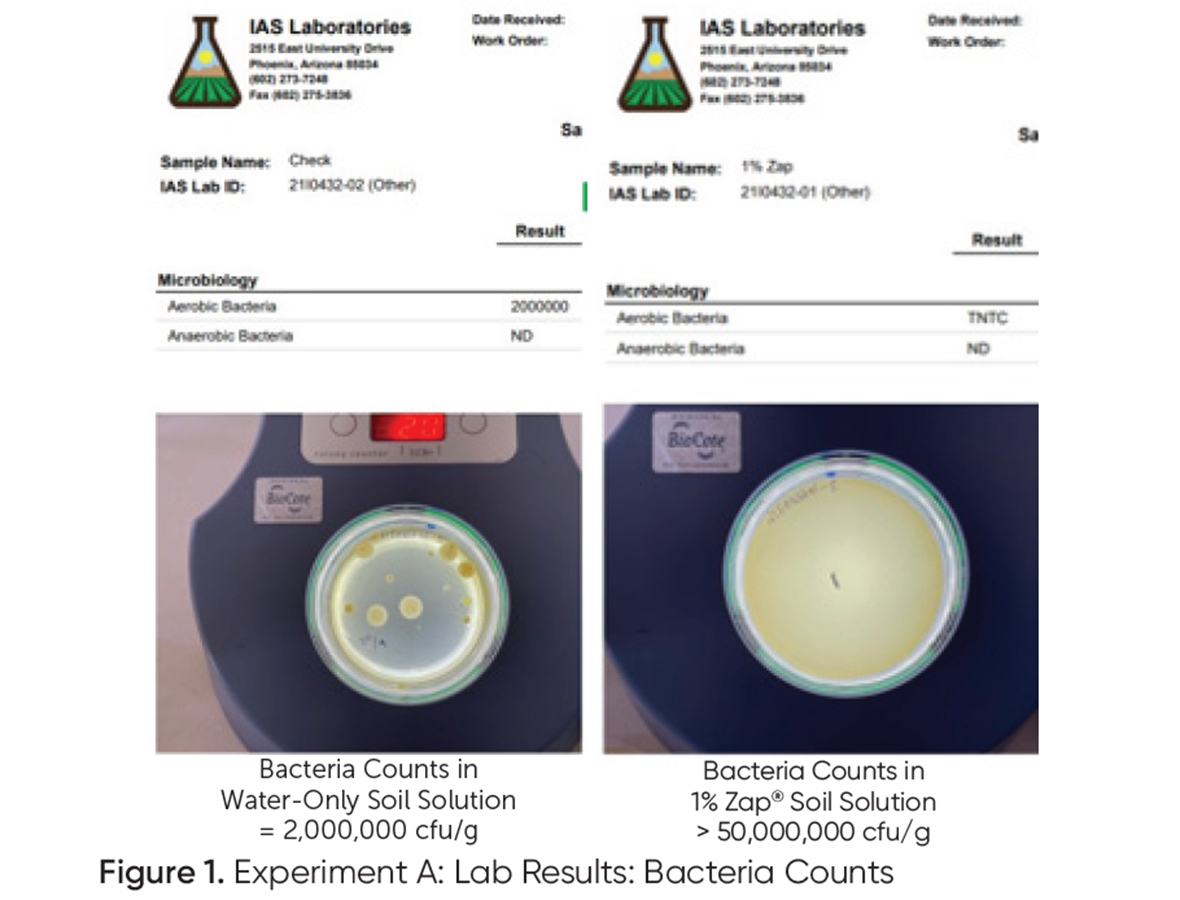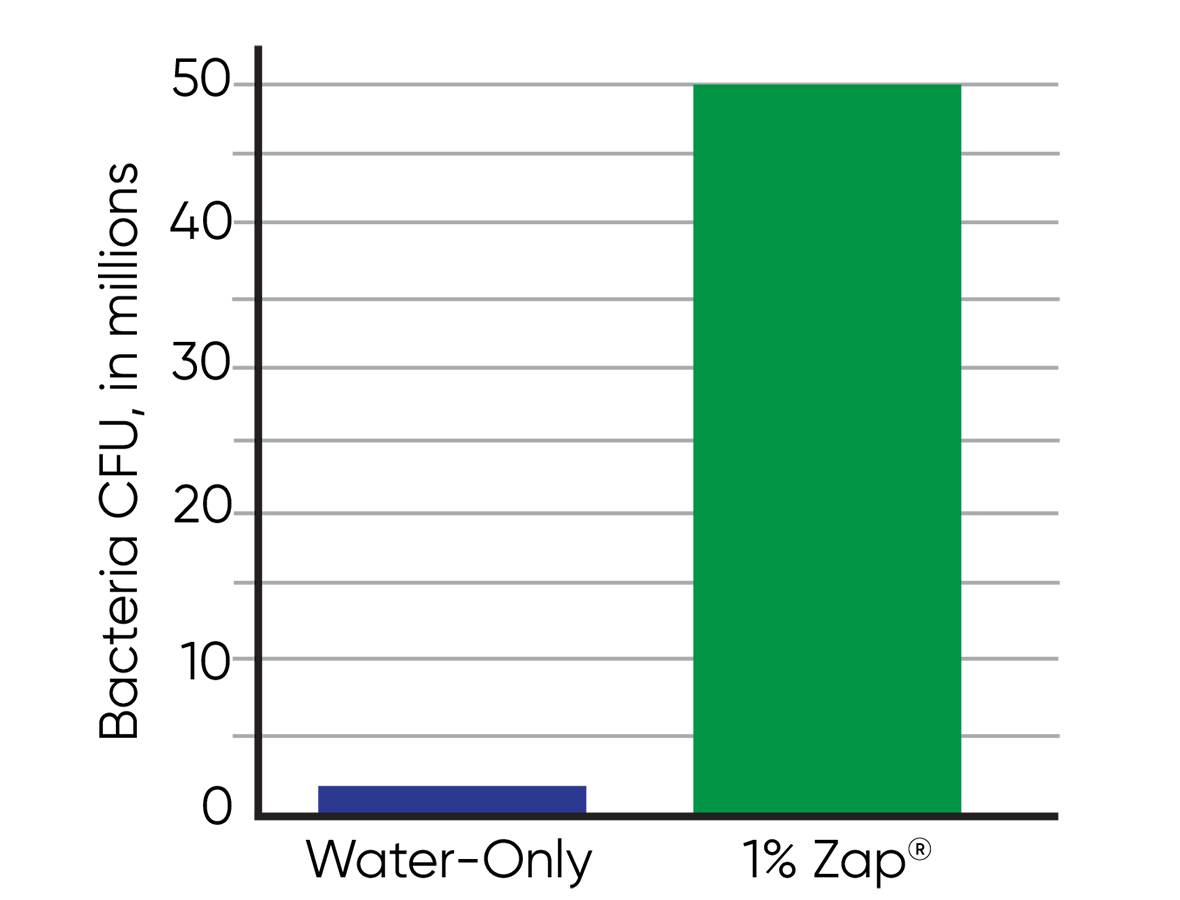Objective
Huma® Zap® has been shown to improve crop yield and soil conditions. This research investigated some of the ways Zap improves soil characteristics such as soil biology and soil structure.
Materials & Methods
Two sets of soil in containers received two different solutions. The first received 120 ml of only water and the second received 120 ml water with 1% Zap® applied at the soil surface. Both sets received additional water to push the first batch of 120 ml water or 1% Zap solution down through the soil column. Then, 48 days after treatment, the soil depths were measured, and the samples were tested for bacteria presence.
Results
Figure 1 illustrates the anaerobic and aerobic bacteria counts in the treated soils after a series of dilutions. The anaerobic bacteria were not detected (ND) by the lab methodology in either the water-only or the 1% Zap® treated soil samples. The water-only treated soil had 2 million cfu/g of aerobic bacteria. The soil treated with 1% Zap® in water had "Too Numerous To Count (TNTC)" cfu/g of aerobic bacteria, since the lab stops counting when the count exceeds the 50 million cfu/g threshold in the petri dish (see Figure 1 and Figure 2).
Initial soil depth in all pots was 7 inches. After adding water only or 1% Zap® solution to the surface of the soil in containers, followed by additional water, both soils settled. However, the settling in Zap®-treated soil was about 7% less (to 6.75 inches) than the only-water treated soil (to 6.25 inches) 46 days after treatment (Figure 3).

Figure 1. Experiment A: Lab Results: Bacteria Counts

Figure 2. Number of aerobic bacteria colony-forming units (cfu) per gram of soil.

Figure 3. Soil Settling 46 Days After Water-Only and Water+Zap® Treatments.
Conclusions
Zap® boosts soil biology. The presence of more aerobic bacteria—which are generally the beneficial types—could help soil structure by flocculating soil aggregates, preventing soil structure collapse and compaction. This aids crop growth and yield. Additional study is recommended to confirm the prolonged effect of Zap® on soil biology in the presence of plants.

